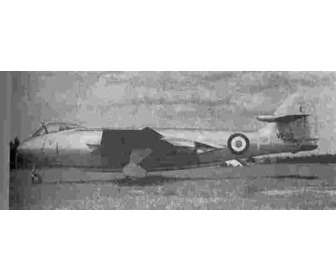Hawker P.1072

Picture has been licensed under a Creative Commons Attribution-Share Alike license.
Original source: of the work, all available copyright information, and a detailed non-free use rationale. This is a copyrighted image that has been released by a company or organization to promote their work or product in the media, such as advertising material or a promotional photo in a press kit. The copyright for it is most likely owned by the company who created the promotional item or the artist who produced the item in question; you must provide evidence of such ownership. Lack of such evidence is grounds for deletion as established by these terms of use.
Original source: of the work, all available copyright information, and a detailed non-free use rationale. This is a copyrighted image that has been released by a company or organization to promote their work or product in the media, such as advertising material or a promotional photo in a press kit. The copyright for it is most likely owned by the company who created the promotional item or the artist who produced the item in question; you must provide evidence of such ownership. Lack of such evidence is grounds for deletion as established by these terms of use.
The Hawker P.1072 was a 1949 experimental British aircraft acting as test bed for the Armstrong Siddeley Snarler rocket booster. It was the prototype Hawker Sea Hawk modified to install the rocket in the tail.
Made by Hawker AircraftHawker.
It is the successor of the Hawker Sea Hawk .
Jet Or Prop
both
Height Alt
2.67 m
Predecessor
Hawker Sea Hawk
Engine(jet)
Rolls-Royce Nene 103
Length Alt
11.46 m
Thrust Main
5180
Power Alt
8.9
Range Main
350 mi
Loaded Weight Main
14500.0
Max Speed Alt
890.0
Type Of Prop
rocket
Loading Main
53
See Also
Saunders-Roe SR.53
Developed From
Hawker Sea Hawk
Height Main
266.7
Max Speed Main
553 mph
Cruise Speed Main
447 mph
Ceiling Main
44500.0
Number Built
1
Crew
1
Thrust/weight
1
Thrust Alt
23.1
Span Main
1112.52
Cruise Speed Alt
720.0
Area Main
264.7
Span Alt
11.13 m
Plane Or Copter?
Engine(prop)
Armstrong Siddeley Snarler ASSn.1
Manufacturer
First Flight
20
Number Of Jets
1
Climb Rate Main
5000.0
More Performance
165.0
Number Of Props
1
Type of jet
Climb Rate Alt
25 m-s
Length Main
1145.54
Area Alt
24.6 m²
Range Alt
560.0
Empty Weight Main
11050.0
Power Main
2000
Category
Empty Weight Alt
approx. 5
000 kg
Loading Alt
258
